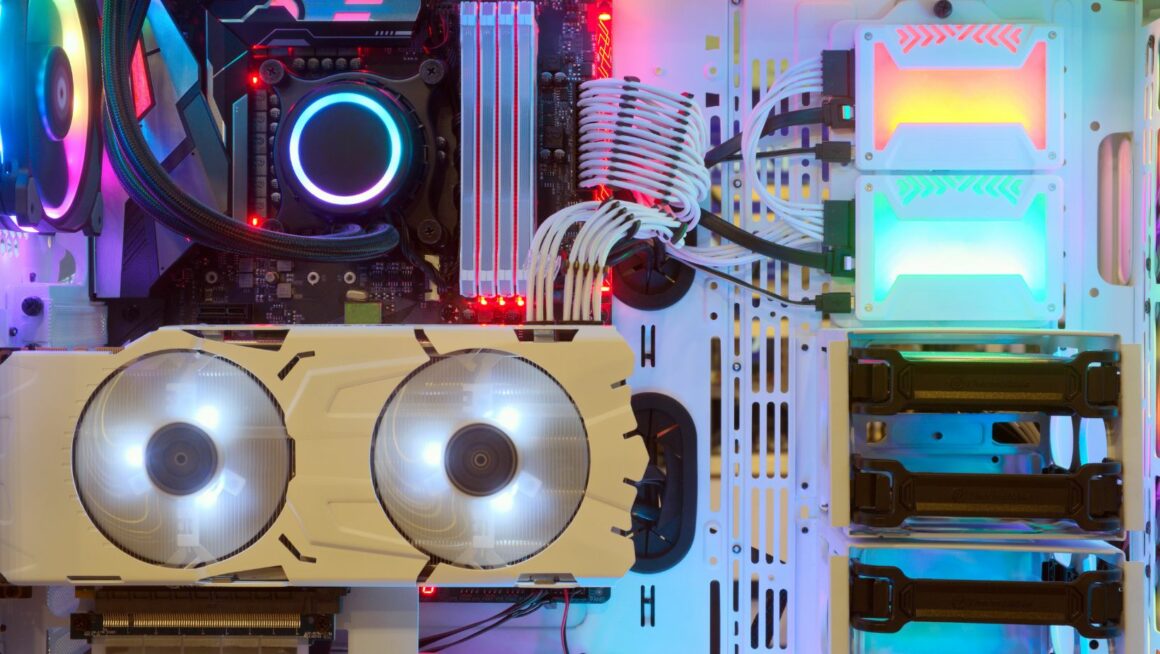Figuring out the airflow direction of a PC fan might seem like a puzzle at first glance, but it’s a crucial step in optimizing your computer’s cooling system. Whether you’re building a new PC from scratch or simply upgrading your existing setup, knowing which way the fan blows can make a significant difference in your system’s temperature management. This guide breaks down the essentials, providing a straightforward method to determine the airflow direction of your PC fans.
How to Tell Which Way a PC Fan Blows
Understanding how to tell which way a PC fan blows is crucial for optimizing your computer’s cooling system. This knowledge ensures effective temperature management, leading to improved performance and longevity of the PC. Here, we present straightforward methods to identify the airflow direction of your PC fans.
Visual Inspection Tips
When trying to determine the airflow direction without turning on the PC, visual inspection offers the quickest clues. Firstly, examine the fan’s housing; most fans have an arrow indicator on one of the sides. This arrow points towards the direction the air flows. Secondly, look at the sticker side of the fan, as it often faces the direction the air is drawn from. Thus, air usually exits on the opposite side of the sticker. Evaluating these visual cues can swiftly reveal the airflow direction without needing to power up the system.
Using a Simple Paper Test
If the visual indicators are absent or hard to interpret, performing a simple paper test can effectively show which way the air moves through the fan. Turn on the computer, and hold a piece of lightweight paper or tissue in front of the fan. If the paper gets sucked towards the fan, it indicates air intake. Conversely, if the paper blows away, the fan expels air out of the case. This straightforward test does not require any tools and offers an immediate understanding of the fan’s airflow direction.
Checking Fan Blade Direction and Design
The fan blade design and orientation also provide insights into the airflow direction. Typically, the curved edge of the blades faces the direction the air is moving towards. Additionally, the angle at which the blades are set can indicate airflow direction; blades are usually slanted in a manner that scoops air and pushes it in the designated direction. By closely observing the blades, one can deduce whether the fan is designed to pull air into the system or push it out.
By employing these methods, anyone can quickly and accurately determine the airflow direction of PC fans, ensuring they are correctly installed for maximum cooling efficiency.
Installing Your PC Fans Correctly
Orientation for Optimal Cooling
 Proper fan orientation is key to achieving the best cooling results in a PC. Typically, fans should be mounted to create a balanced airflow within the case, with intake fans positioned to draw in cool air from outside and exhaust fans set up to expel warm air from inside.
Proper fan orientation is key to achieving the best cooling results in a PC. Typically, fans should be mounted to create a balanced airflow within the case, with intake fans positioned to draw in cool air from outside and exhaust fans set up to expel warm air from inside.
-
Intake Fans: These fans should be installed on the lower front or the side panel of the PC case. Ensuring they face outward helps in pulling cool air into the system.
-
Exhaust Fans: Installation at the top or the rear of the case is ideal for these fans. They should face inward, facilitating the expulsion of warm air out of the case.
Common Mistakes to Avoid
When installing PC fans, certain pitfalls can negatively impact airflow, leading to increased temperatures and reduced performance:
-
Incorrect Orientation: Installing fans backward can disrupt the intended airflow pattern, causing poor cooling. Always double-check the airflow direction indicated by arrows on the fan or the blade design.
-
Mismatched Fan Sizes: Using fans of different sizes without proper configuration can lead to inefficient airflow. Larger fans should typically be used for intake since they can move the same amount of air at a lower speed, minimizing noise.
-
Obstructing Airflow: Ensure that cables and components do not block the airflow pathways within the PC case. Good cable management helps maintain unobstructed air movement.
-
Neglecting Dust Filters: While not directly related to fan installation, failing to clean or use dust filters can lead to dust buildup, hindering airflow and cooling efficiency.

